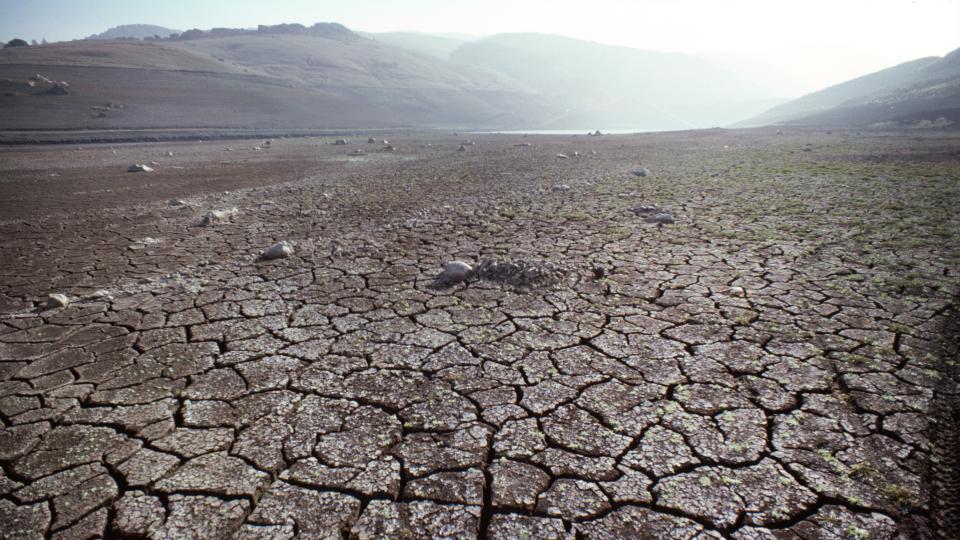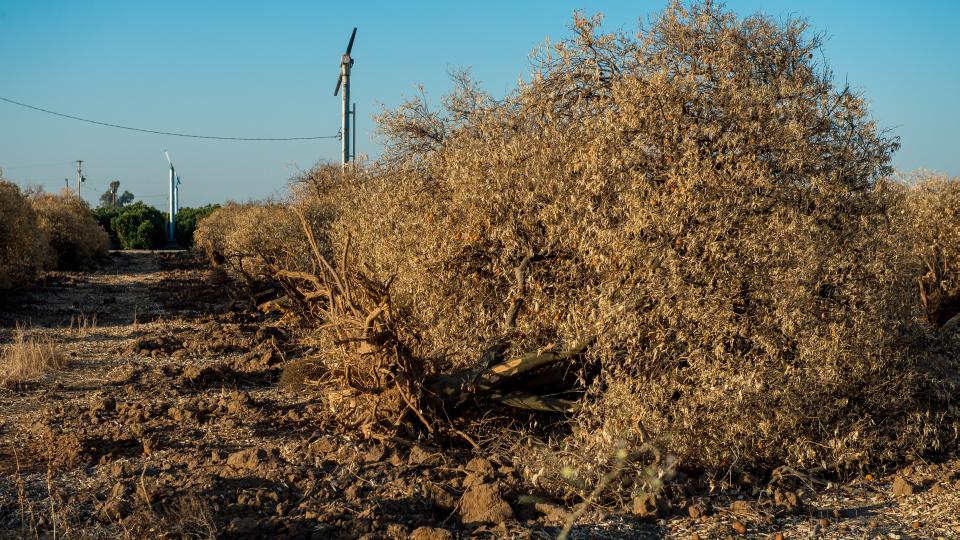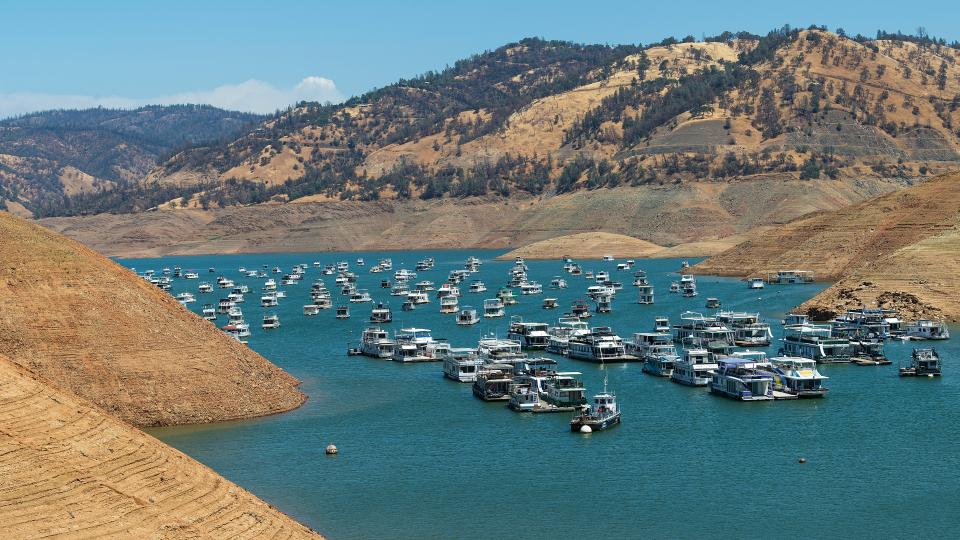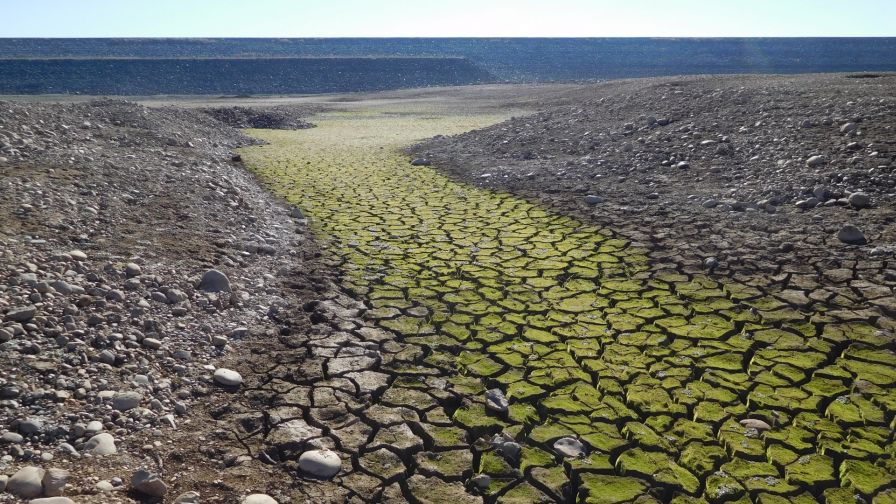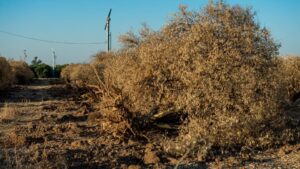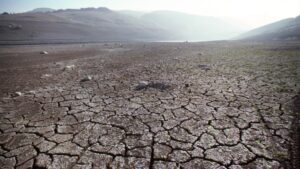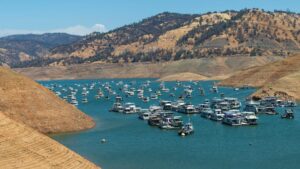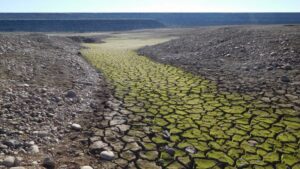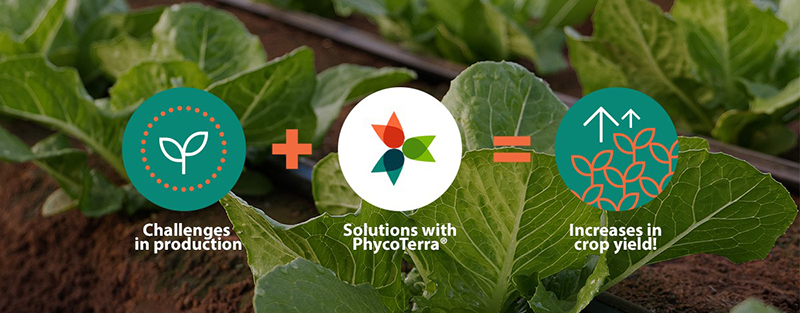Wading Through Water Woes: California Growers Face Uncertain Future
Editor’s Note: This is the first in a series of regional spotlights we’ll be running in the next few issues. This month’s focus on the California water situation will be followed in October with a look at the Pacific Northwest and what growers are doing in the aftermath of this past summer’s record-setting heat wave along the coast that wreaked havoc, especially with berry crops. In November, our focus will shift to the Great Lakes.
California fruit growers must feel a little like their heads are spinning while trying to follow the developments by state regulators who are issuing increasingly ominous announcements about the state’s water supply. The first six months of the “water” year, which begins at the start of the rainy season in October, ranked as the fourth driest on record, which has led to drought declarations in much of the state.
In early August, just after American Fruit Grower’s September issue published, the State Water Resources Control Board is holding a hearing on an emergency regulation that, if adopted and approved, would affect the ability of water right holders in the Sacramento-San Joaquin Delta watershed to divert water.
The proposed order — which is expected to be approved — affects thousands of farmers with legal rights to pull water out of the rivers. But even more troubling to longtime observers is that state regulators are now seeking to take unprecedented actions against growers with senior water rights, says Erick Johnson, Water Consultant and Broker, The Water Agency, Inc. in Clovis, CA.
“The big problem is we’re moving into unchartered territory with the board’s proposed action to restrict even senior rights,” Johnson said in late July. “To my knowledge, that’s a first, and I think it will stick this time.”
The reason Johnson thinks the state will issue the order is because they took a similar action a few years ago, but growers sued, and the court ruled the state hadn’t correctly followed procedure, a mistake they won’t make this time around.
“It’s an unfortunate wake-up call even for people who thought they had secure water rights,” he says. “Until now, people thought only those with less than senior water rights would be hurt by the environmental craziness, but now we’re seeing everyone swept into the maelstrom.”
Johnson, as do many observers, thinks this problem didn’t need to happen. Back in the 1980s, in the third year of a drought, even junior rights holders in the more water-starved Southern San Joaquin Valley received a 100% allocation from the state.
“But here we are, one dry year, and the regulators have caused so much water to be dumped out of our reservoirs for the fish to swim out to the ocean,” he says. “The rest of the country thinks we’re in a terrible drought in California, but our system was built for droughts. However, the way it has to be run because of ESA (Endangered Species Act) issues, so much water has been released from reservoirs, that we’ve lost our buffer.”
FISH AREN’T THIRSTY
The state’s position has infuriated many growers, such as Alan Boyce, Executive Chairman of Materra Farming, Inc. He farms in different areas of the state, including Imperial and San Joaquin counties, as well as the Yuma, AZ area, and has a good picture of the state’s stance on water. The decline of native fish populations, which the state pointed to as the reason for increasing flows out of the reservoirs, is not due to a lack of water, he says, but a lack of food.
“The fish aren’t thirsty. They’re tired of being eaten by the striped bass — that were brought in by sport fishermen — that are vacuum cleaners on the rest of the fish population,” he says. “So now we have this alliance between environmentalists and bass fishermen, and here we are.”
Where Boyce has found himself is in the curious position of a farmer choosing not to farm in some cases. Boyce grows such “permanent” crops as pistachios, lemons, and dates but will plant other crops, such as processing tomatoes, if the price is right. He has an excellent source of groundwater where he farms at the very southern end of the San Joaquin Valley and is one of the first to harvest around the Fourth of July.
However, this past March the tomato processors offered a price equivalent to selling the water for $300 an acre-foot in that area, where it was then selling for about $650, so Boyce decided not to plant. He’s still sitting on that water, which he now says is selling for well over $1,000 per acre-foot. Because Boyce farms permanent crops, which must be irrigated, he’s sensitive to the needs of his fruit-growing neighbors in the area, and that’s where the water will go.
“We’re working with neighbor citrus growers for less than going price, but more than for the tomatoes, because they’re our neighbors, and we’re going to help them,” he says. “I don’t want my neighbors to go bankrupt; Sacramento might never help me out, but my neighbors will.”
GROUNDWATER
With the reservoirs down so much relatively early in the year, it’s no wonder growers would turn to such a source as groundwater to irrigate their thirsty citrus groves. The problem is groundwater pumping has been going on for many years. It reached a crescendo during the most recent drought, leading to problems with the ground sinking, which is known as subsidence. This spurred the state to pass the Sustainable Groundwater Management Act (SGMA) in 2014.
Basically, SGMA, pronounced “sigma,” requires local agencies to form groundwater sustainability agencies (GSAs) for the high- and medium-priority basins. GSAs develop and implement groundwater sustainability plans (GSPs) to avoid undesirable results and mitigate overdraft within 20 years.
It sounds great in theory to go with local control, but Boyce says, as a practical matter, the GSAs are run by the irrigation districts that are controlled by large landowners, and some growers are going to be in trouble.
“They’re not out for the little guy,” Boyce says, “and some are in areas with no surface water, and their groundwater usage is being determined by farmers in neighboring irrigation districts, which is not good.”
The Almond Board of California is helping growers manage SGMA, says Gabriele Ludwig, Director, Sustainability & Environmental Affairs, giving them tools such as increased irrigation efficiency. She notes that the GSAs have until 2040 to reach sustainable levels, though a few submitted GSA plans have already been rejected by the state.
She’s concerned about the current drought situation but notes that most almond growers will get a crop this year. But with almond prices at their lowest levels in a couple decades, growers are still smarting this year. It takes a price of about $2 per pound to cover all normal operating costs, and the price is around the $1.50 mark.
ULTIMATE IMPACT
The ultimate impact of SGMA on almond growers will mean there will be fewer smaller growers, Ludwig says, as larger growers can afford to buy land elsewhere that has water rights. But make no mistake, almond growers will have it pretty good, relatively, as the prices they normally fetch are much higher than can be obtained from crops such as alfalfa.
“There will be less crop diversity in the San Joaquin Valley,” she predicts, “and less irrigated farmed acres in the entire Central Valley, not just San Joaquin Valley.”
Ludwig notes the Public Policy Institute of California estimates that eventually, 500,000 to 1 million acres will need to be fallowed in just the San Joaquin Valley.
“We have no idea how growers will decide on various crops, that is really hard to predict,” she says, “but it will likely come down to which crops will give you the most value for the cost of the water.”
Almonds have other advantages, she notes, as they are not as labor-dependent. They are sold to a great diversity of markets, and they fit in with all the modern diets.
However, almonds do use more water than wine grapes, notes Jeff Bitter, the President of Allied Grape Growers. They use about 4 feet of water per year, while wine grapes use about 2 to 2.5 feet. But development of a vineyard costs two to three times that of an almond orchard, and they can be farmed almost anywhere, unlike almonds, so Bitter feels most grape acreage in the future will move north and west of the San Joaquin Valley.
As for the near future, growers will have tough decisions to make.
“You’re basically going to have growers with excess land, because they’re not watering other properties to save either for their most profitable crops or permanent crops,” Bitter says. “They have to make decisions that will give them the most returns based on water. I talked to a guy recently who said that is exactly what he’s facing, as he can make more per acre on tomatoes this year than on wine grapes.”
Boyce has similar advice, a lesson he says he learned years ago from a farmer faced with serious cutbacks.
“It’s all about what you’re selling your water for, so put (the land) to its highest and best use, and don’t grow your low-value crops,” he says. “Everyone should think that way. If you can’t grow more valuable crops, sell your water to a neighbor who can, and you’re both better off.”




